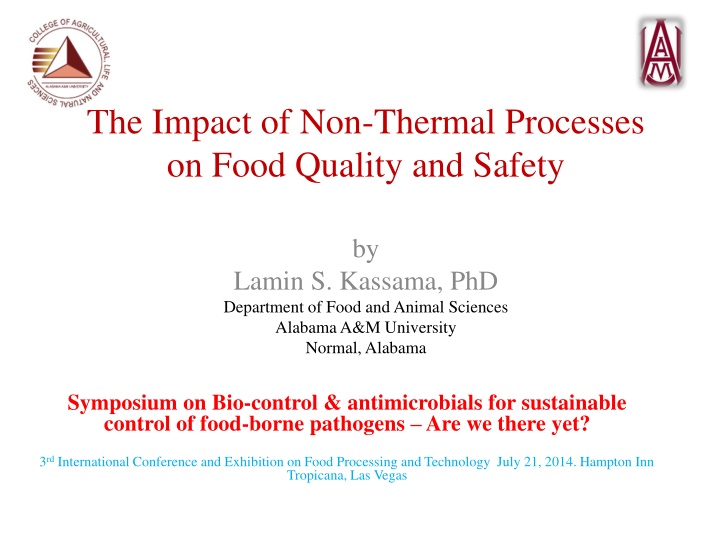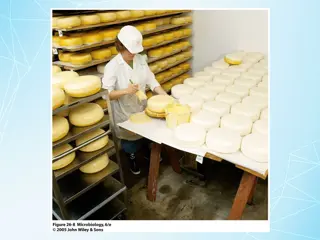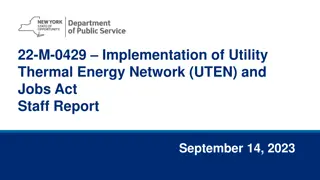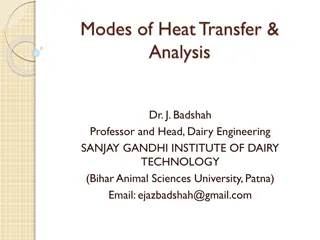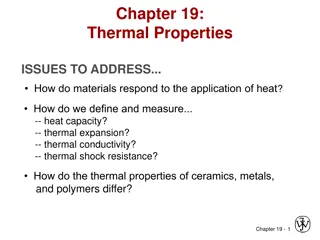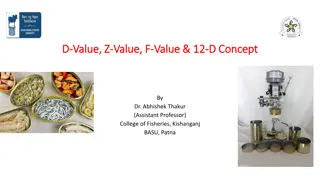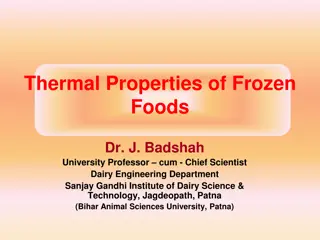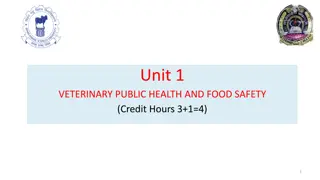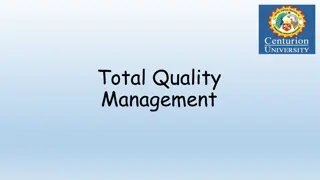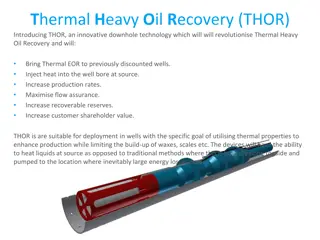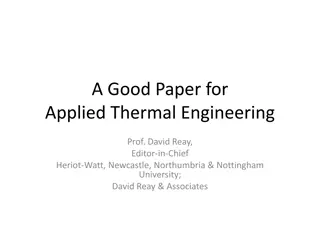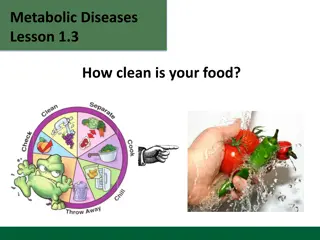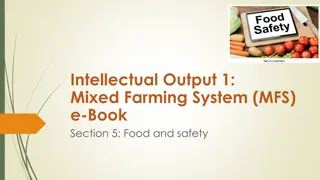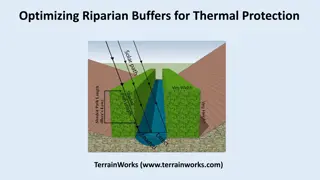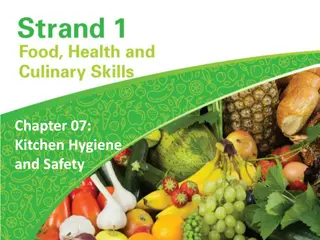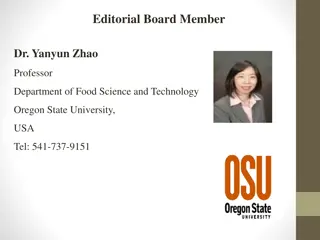Impact of Non-Thermal Processes on Food Quality and Safety
The symposium discusses the use of non-thermal technologies like ultrasonication and pulsed ultraviolet light in ensuring food safety and quality. Topics include applications, effects, and future implications of these processes on food-borne pathogens. Various principles and technologies are outlined, highlighting the mechanisms and benefits of ultrasonication in food processing. The presentation covers the impact of ultrasonication on cell structures, energy levels, and the overall safety of food products.
Download Presentation

Please find below an Image/Link to download the presentation.
The content on the website is provided AS IS for your information and personal use only. It may not be sold, licensed, or shared on other websites without obtaining consent from the author.If you encounter any issues during the download, it is possible that the publisher has removed the file from their server.
You are allowed to download the files provided on this website for personal or commercial use, subject to the condition that they are used lawfully. All files are the property of their respective owners.
The content on the website is provided AS IS for your information and personal use only. It may not be sold, licensed, or shared on other websites without obtaining consent from the author.
E N D
Presentation Transcript
The Impact of Non-Thermal Processes on Food Quality and Safety by Lamin S. Kassama, PhD Department of Food and Animal Sciences Alabama A&M University Normal, Alabama Symposium on Bio-control & antimicrobials for sustainable control of food-borne pathogens Are we there yet? 3rd International Conference and Exhibition on Food Processing and Technology July 21, 2014. Hampton Inn Tropicana, Las Vegas
Outline Technologies and Principles Ultrasonication (US) Pulsed Ultraviolet light (PUV) Antimicrobials Applications and Effects Future Implications
Introduction: Ultrasonication Ultrasonication Ultrasonic pressure wave directed to food surface Generates force if perpendicular Results to compression waves If parallel Shearing waves Both waves attenuate as they move through food Depth of penetration and antimicrobial effect Dependent on the frequency and intensity of waves Composition of food
Introduction: Ultrasonication Ultrasonication The rapid localized change in pressure Cause shear disruption Cavitation Creation and rupture of microscopic bubbles Thinning of cell membranes localized heating Lethal effect on microorganisms Detachment of microbes in surfaces High pressure breaks cell wall Disrupt cell membrane Damage DNA Source: Soria and Villamiel, 2010
Introduction: Ultrasonication Depolymerization effect on Cell Structure Source: Chemat et al., 2011
Introduction: Ultrasonication Low Energy (< 1 W/cm ; >100 KHz) Non-invasive detection Stimulate activity of living cells Surface cleaning Effects on enzyme Extraction Crystallization Emulsification Filtration Drying Tenderization of meat
Introduction: Ultrasonication High Energy (>1 W/cm (10 1000 W/cm ) ; Between 18 & 100 KHz) Physical disruption, Acceleration of chemical reaction Degassing of liquid foods Extraction of enzymes and proteins Inactivation of enzymes Induction of nucleation for crystallization Enhance drying and filtration
Introduction: Ultrasonication Methods of US Applications Ultrasonication Low temperature Inactivate enzymes and microbes Heat liable products Requires long treatment time Themosonication Combination of untrasound and heat Greater effects on microbes Lower D and Z values than conventional thermal processing
Introduction: Ultrasonication Method and Applications Manosonication Combined sonication and pressure Effectively inactivates microbes than ultrasound Efficacy higher than ultrasound alone at the same temperature Manothermosonication Combination of heat, ultrasound and pressure Much more effective than the three categories above Inactivate enzyme/microbes at low temperature and short time Heat stable enzymes also effectively destroyed Effect on cavitation Application of temperature and pressure maximizes cavitation Heat resistant enzymes Lipoxygenase, peroxydase ettc
Applications: Ultrasonication Different scales Source: Chemat et al., 2011
Ultrasonication: Enzymatic inactivation Inactivation of PME in tomato juices Methods C Volume (mL) Intensity mg/L.min NA 0.007 0.012 0.020 D-Value (min) Conventional 50 50 50 50 100 200 100 50 25.3 241 43 24 Ultrasonication 61 61 61 72 72 72 200 100 0.005 0.007 0.012 0.004 0.005 0.008 8 2 0.8 0.7 0.4 0.3 Thermosonication 200 100 50 Source: Raviyan et al., 2005
Ultrasonication: Effect on Quality The effect of ultrasonication on color and anthocyanin content in grape juices Parameters pH Brix L* a* b* Cyanidin-3-O-glucosides (CA) (mg/100 mL) Before 3.78 7.02 22.06 9.27 -8.79 13.39 After 22.69 9.79 -7.97 13.68 Source: Tiwari et al., 2010
Introduction: PUV Pulsed Ultraviolet light Is a method of food preservation Using intense and short duration of pulses of broad spectrum white light The spectrum involves wavelength in the UV and near infrared region Materials exposed to at least 1 pulse of light having an energy density in the range of 0.01 to 50 J/cm Wavelength distribution About 70% of the electromagnetic energy is within the range of 170 to 2600 nm used
Introduction: PUV Pulsed Ultraviolet light Similar spectrum as sunlight Emits electromagnetic radiation from 100 to 1100 nm from the UV region to Infrared region Peak emission between 400 to 500 nm It is non-ionizing part of the electromagnetic spectrum Source: http://steribeam.com/technology/SBS-PUV-principles
Introduction: PUV Pulsed Ultraviolet light Short pulses (1 s to 0.1 s) Typically 1 20 flashes per second Spectrum Intensity (Xenon produce about (80,000 x) at sea level Source: http://steribeam.com/technology/SBS-PUV-principles
Introduction: PUV Pulsed Ultraviolet light Energy input to food surface or package surface area Expresses in Energy per square area (J/cm ) or energy density Broad spectrum of Pulse light inactivates microbes Via the combination of photochemical and photothermal mechanism Photochemical Chemical modifications of proteins membrane and other cellular materials and DNAs The UV-C provide greater photochemical effects Source: http://steribeam.com/technology/SBS-PUV-principles
Introduction: PUV Pulsed Ultraviolet light Energy in the visual spectrum Contributes to the photothermal effect Large amount of energy is transferred rapid to the surface Temperature increase Sufficient to destroy vegetative cells Source: http://steribeam.com/technology/SBS-PUV-principles
Introduction: PUV Pulsed Ultraviolet light Wavelength is divided into different regions of UA-A: 315 - 400 UV-B: 280 - 315 UV-C: 200 280 Microbial Effect Absorption of energy by the conjugated double carbon bonds in proteins and nucleic acids Cause crosslinking between the pyrimidine nucleoside bases in DNA Disruption of cellular metabolism Results of irreversible changes Source: http://steribeam.com/technology/SBS-PUV-principles
Application: PUV Systems Treatment chamber and generator Static and or continues systems
Application: PUV Systems Effect on Salmonella Enteritidis Source: Yang and Singh 2010
Application: PUV Systems Continuous UV Decontamination system for treating poultry chiller water UV generator UV Reactor Flow Meter Treated Samples Made of stainless steel Peristaltic pump Reactor Capacity = 151.1 cc Sample
Application: PUV Systems Continuous reactor 1 1 0.1 Survival ratio 0.01 0.001 0.0001 Flow rate (mL/s) 2.39 mL/s 5.39 mL/s 9.03 mL/s 12.6 mL/s
Application: PUV Systems Continuous reactor 1.00E+00 1 1.00E-01 1.00E-02 Survival rate 1.00E-03 1.00E-04 1.00E-05 1.00E-06 1.00E-07 Flow rate (mL/s) 0.63 mL/s 1.73 mL/s 2.54mL/s
Effect on Salmonella Pulsed UV effect on Salmonella 1 1 0.1 0.01 Survival ratio 0.001 0.0001 0.00001 0.000001 0.0000001 Treatments T1 T2 T3 T4 T5 T6 T7 T8 T9 T10 T11 T12
Introduction: Antimicrobials Crave for natural foods, organic and less chemically processed food are the trend Therefore, the application of Conventional aqueous Sanitizers for washing Chlorine Hydrogen peroxide Trisodium phosphate The use of this solution has not be successful in controlling Produce adverse effect: chlorine --- trihallomethanes Use of Organic acids as antimicrobial They are GRAS and known to inactivate foodborne pathogen
Introduction: Antimicrobials For example Lactic Acid: are know to increase the lag phase of pathogens, lower the growth rate during storage Lactic acid surface treatment: usually in water base solution and hydrophilic Challenges Use of hydrophilic agent in hydrophobic environments Many studies has shown microbes to be entrapped in fat matrix in meats and poultry Thus limit the effectiveness of some antimicrobial Surfactants (Sodium Lauryl sulfate) Decrease surface tension and enhance wettability of hydrophobic surfaces Amphiphilic, thus enhance mobility when mixed with antimicrobials
Applications: Antimicrobials Antimicrobial Table: Organic acid antimicrobial effects in lettuces Microbes Trtm Lactic Acid (Log CFU/g) Con (%) 10 min 20 min 30 min E. Coli 0.3 0.73 1.87 2.51 0.7 1.26 1.92 3.09 1.0 1.57 2.07 3.42 0.3 0.72 1.46 2.08 S. Typhimurium 0.7 1.50 1.62 2.49 1.0 1.76 2.06 2.67 0.3 0.70 1.71 2.52 L. Monocytogenes 0.7 1.13 2.03 3.03 1.0 1.20 2.14 3.45
Applications: Antimicrobials Effect of Essential oils on growth of E. coli ATCC 25922 Essential Oils Concentration Lag phase (h) Growth rate (/h) Lemon balm 20,000 ppm 5.21 0.4 Oregano 300 ppm 3.84 0.36 Rosemary 10,000 4.55 0.48 Oregano+Basil 1:2 11.28 0.45 Oregano+lemon balm 1:2 8.76 0.31 Oregano+Rosemary 1:2 5.84 0.38 Source: Gutierrez et al., 2008
Applications: Combine Ultrasound and OA Combine ultrasound and organic acid treatment of Escherichia coli O157:H7 in lettuce Log CFU/g Organic acid and Ultrasonic Treatments (40 Hz and 30 W/L) 0.89a 1.09b 1.78c 2.26d 1.4ab 2.21c 2.53d 1.62b 1.84c 2.09d Organic Acid Treatments Organic Acids Concentration (%) 0.0 0.3 0.7 1.0 0.3 0.7 1.0 0.3 0.7 0.1 0.3a 0.57ab 1.23bc 1.45d 0.53a 0.97ab 1.03bc 0.5a 0.91ab 1.15bc Malic acid Source: Sagong et al., 2011 Lactic Acid Citric Acid
Applications: Combine Ultrasound and PUV Combine ultrasound and PUV inactivation E. coli O157:H7 in apple juice Source: Munoz et al., 2012
Future Implications Potential in Food safety Ultrasound Enhance penetration to inaccessible sites (hydrophobic pockets in foods), Combination of this technologies improve safety issues Fresh cut fruit and vegetables; meat and poultry Design of a suitable system Combine PUV, Ultrasound and Acidification Low cost and Green technology Automated system in food production lines
References Awad, T. S., et al. (2012). "Applications of ultrasound in analysis, processing and quality control of food: A review." Food Research International 48(2): 410-427. O donnell, C., et al. (2010). "Effect of ultrasonic processing on food enzymes of industrial importance." Trends in food science & technology 21(7): 358-367. Piyasena, P., et al. (2003). "Inactivation of microbes using ultrasound: a review." International Journal of Food Microbiology 87(3): 207-216. Sagong, H.-G., et al. (2011). "Combined effect of ultrasound and organic acids to reduce Escherichia coli O157:H7, Salmonella Typhimurium, and Listeria monocytogenes on organic fresh lettuce." International Journal of Food Microbiology 145(1): 287-292. Soria, A. C. and M. Villamiel (2010). "Effect of ultrasound on the technological properties and bioactivity of food: a review." Trends in food science & technology 21(7): 323-331. B.K. Tiwari., et al. (2010). Effect of ultrasound processing on anthocyanins and color of red grape juice. Ultrasonics sonochemistry 17: 598-604. Monoz et al. (2012). Effect of E. coli inactivation and quilaity attributes in apple juice treated by combination of PUV and thermosonication. Food Research International. 45: 299-305. Chemat, F., Z. Huma and M.K. Khan. (2011). Applications of ultrasound in food technology: processing, preservation and extraction. Ultrasonic Sonochemistry. 18: 813-835.
